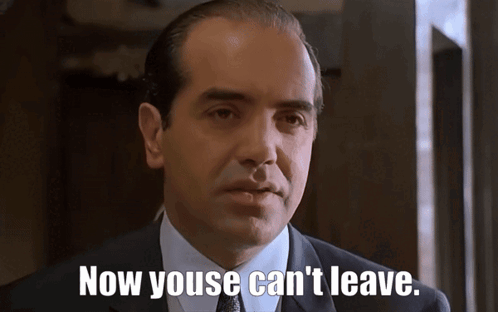Checklist Series, Part 6: "Sticky" business
Where do you think you're going? That's right... nowhere!
We all pay bills we can’t stand. Telecom. Gas. Insurance. The companies we buy from have us by the proverbial balls, and they know it.
Corporate buyers know the feeling well. It has been a bit of a joke at how much Oracle has been hated by IT departments, and yet experienced near-100% customer retention.
If a service is mission critical without close substitutes, or if it benefits from network effects, then it has the advantage of being a “sticky” business. These are the best kinds of businesses, because they can commit a multitude of sins before customers reach a breaking point and seek out alternatives. (They shouldn’t operate this way, and the best of them don’t, but many of them do, and they get away with it… for a while.)
The best investments often come from businesses who can turn an un-sticky business into a sticky one. Before Apple built out their software ecosystem, many of us routinely swapped from one hardware company to another for our computers, phones, and tablets. But by slowly and surely expanding the tendrils of its ecosystem across platforms, Apple created a supremely sticky business. No, we don’t line up around the block to buy the latest iPhone any more, but we will almost certainly be upgrading to the next model when our battery inevitably gives up the ghost, because switching platforms seems like an unnecessary, daunting task. The earnings multiple on Apple went from under 10x to over 30x, largely as a consequence of this factor.
Every company wants to create that “sticky” relationship with its customers - this is not a revelation. As investors, we should be willing to pay more for a business that has established this firewall around its business, but we shouldn’t ignore the potential for disruptive competition, especially in the new world of AI, which will upend industries.
As investors, we need to watch these numbers closely - understanding the angles from which the competition is attempting to attack the status quo, and listening to what customers are saying. It’s important to monitor customer retention rates and margins, but these can be trailing indicators if you are really paying attention to industry dynamics.
When the world gets uncertain, I want to own businesses that sell a product that customers need, not just a product that they want. This also increases stickiness.
Ultimately, finding these types of companies provides a bit more certainty in an increasingly uncertain world, and when we talk about seeking out high quality, low risk investments, this is exactly what we are looking for.
You can catch up on prior entries in this series here:


